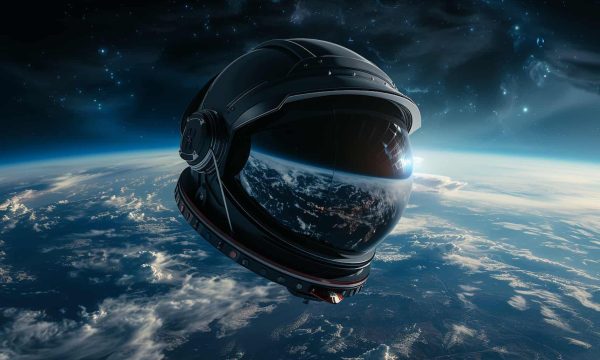
The Movies Get It Wrong… Here Are the Real-Life Consequences of Removing a Helmet in Space
Last Updated: March 27, 2024
Space, the final frontier, is as perilous as it is fascinating. Hollywood has long captivated us with harrowing tales of astronauts facing the ultimate peril: the unforgiving void of space.
Picture the scene – an astronaut’s helmet is gone in an instant, leading to dramatic and often gruesome consequences. These moments, filled with tension and horror, depict a range of terrifying outcomes, from instant freezing and suffocation to more gruesome fates like blood boiling and eyes bulging in a silent scream.
But how much of this is cinematic embellishment, and what is the stark reality of facing the vacuum of space unprotected? Let’s take a look at the myths and truths about the dangers of space exposure, and explore the critical role of helmets and spacesuits in safeguarding astronauts from the lethal elements of the cosmos.
Introduction/ Background
First, we need to determine what is necessary for our bodies to survive as well as what will happen if we are not in an ideal environment. There are three major concerns:
- Pressure
- We need pressure surrounding our body to help keep our lungs inflated
- If there’s too much pressure, your lungs will crush and your heart will give out
- We need an atmospheric pressure between 0.5 to 5 times the atmosphere of Earth for our lungs to operate effectively
- Temperature
- Our bodies need a stable temperature to operate effectively; if we get too cold, we can die of hypothermia, and if we are above 140F (60C) for a few minutes, we overheat
- An effective balance of gases
- Ideally a mixture of nitrogen and oxygen
- Our body cannot breathe other gases such as carbon dioxide
How does space compare with this environment we need for life? Space is a vacuum, i.e. no pressure to inflate our lungs, no air molecules to breathe, and no heat since heat can’t travel through a vacuum.
(The temperature is dependent on where you are in space as you would obviously be very hot if you were close to the Sun, but also being in the unfiltered sunlight in space on the dayside of the planet can be quite warm. In general, space is very cold.)
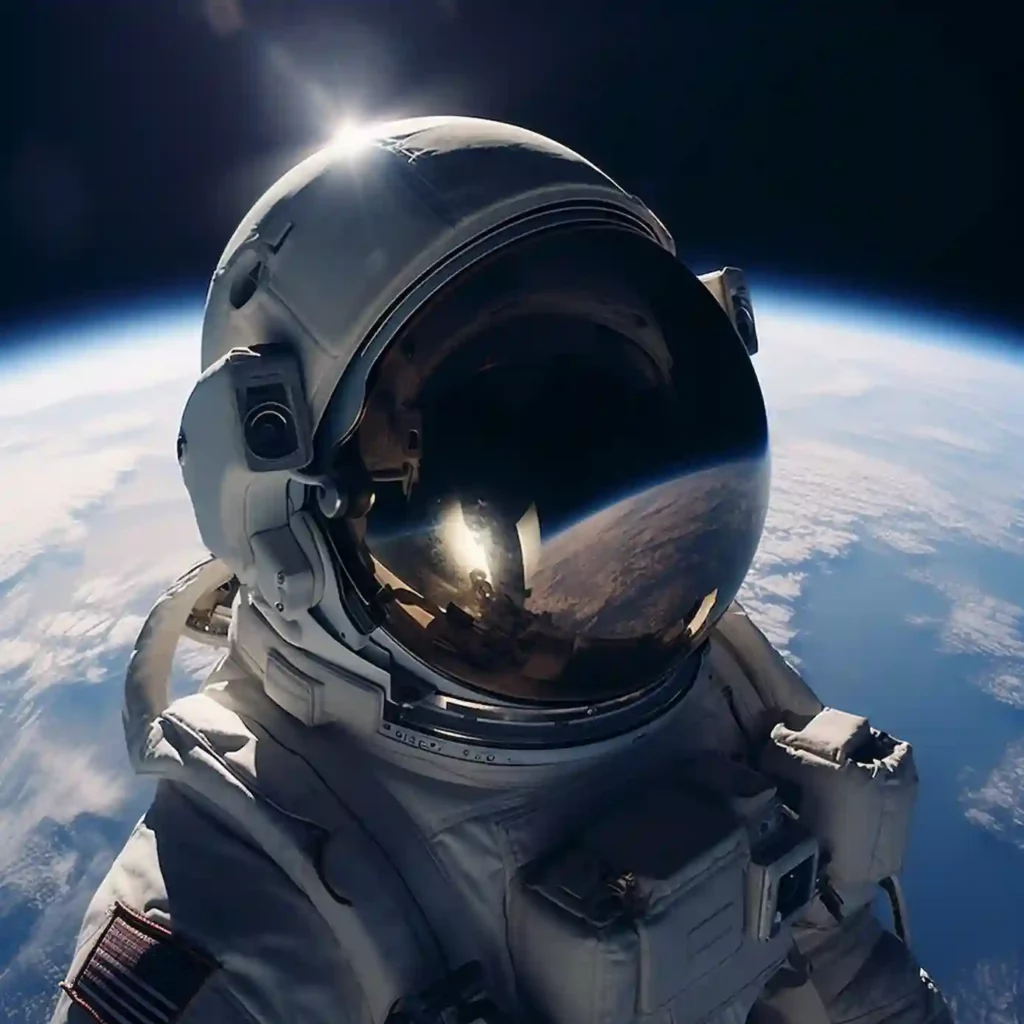
What if you take your helmet off in space?
You’ve probably seen Hollywood depictions, but Hollywood isn’t always known for their accuracy. Let’s first take a moment to discuss what wouldn’t happen.
- You’re not going to explode
- Your blood’s not going to boil
- Death wouldn’t be instantaneous, but it also wouldn’t be instant
It’s important to remember that you are covered in a particularly useful organ that will help your body not lose all cohesion once there’s zero pressure outside. You have skin and it does a really great job of keeping your insides… well inside versus outside, providing a little bit of elasticity (stretch), but not too much. It keeps you from exploding and keeps your blood pressure high enough to prevent boiling from the lack of pressure outside.
So, knowing these facts, what would happen if you found yourself in space with no helmet?
- All the air in your lungs will rush out within a moment.
- You would technically be able to go through the normal breathing motions despite there being no air to breathe. Your heart would continue beating and pushing blood out to your organs, but it doesn’t contain oxygen.
- You will fall unconscious in about 15 seconds when your brain essentially goes into hibernation mode from lack of oxygen to conserve energy
- Suffocation and organ failure from lack of oxygen will occur in about 2 minutes with complete brain death in 3 minutes.
- Your body will freeze solid and float forever in the vastness of space. While this won’t happen immediately, the deep cold of space is -455F (-270 C) which will cause frostbite on exposed skin within seconds and you’ll likely freeze completely solid in about a day.
Note: You will inflate as nitrogen in your bloodstream will collect in bubbles near the surface of your skin and expand, causing you to puff to about twice your size starting with your hands and feet. This is called ebullism and it’ll cause you to feel pretty awful, but you won’t die from it, at least not before the other things mentioned above kill you.
If an astronaut absolutely had to take their helmet off, they should completely exhale beforehand (holding your breath would cause the air in your lungs to expand and rupture your lung tissues as it expands into your chest cavity and forces air bubbles into your bloodstream). The astronaut would have about 15 seconds before they go unconscious. They better have a spare helmet at hand or access to an open airlock.
If the astronaut were rescued 30 seconds after removing their helmet, they would likely make a full recovery with minor issues, but a minute would cause serious side effects including ebullism, flash-frozen skin, and a horrible sunburn for any unprotected areas of the body that received unfiltered UV radiation from the Sun. Past the two-minute mark, their organs will have shut down from lack of oxygen, ergo dead.
Has an astronaut ever taken off their helmet in space? No.
Can you take your helmet off on the International Space Station?
Yes, since the ISS is pressurized and has a life support system, you can take your helmet off after a spacewalk in space or a journey from Earth utilizing the airlocks which provide a space for the astronauts to repressurize once the airlock to space is closed and then open the inner airlock to the Station.
This is not immediate and for good reason as spontaneous depressurization can cause issues such as fatigue, joint and muscle aches or pain, and clouded thinking.
Can we take off our helmets on other worlds in our solar system?
The short answer is no, but let’s look at a few popular destinations to see why:
- Mars has a very thin atmosphere that doesn’t provide protection from the UV radiation from the sun and doesn’t provide enough atmospheric pressure at only ⅓ of Earth’s, which would cause severe decompression sickness. The average temperature is also about -81F (-63C) so unless you happen to be in the right location during the summer the temperature would also kill you.
- The Moon has no atmosphere meaning, even on the surface of the moon, you are in space and would suffer the same consequences.
- While being Earth’s twin, Venus is certainly not habitable. The surface features 90 times the atmospheric pressure as Earth, temperatures averaging about 900F (460C), and toxic acidic gases from the volcanic activity that is trapped by the thick atmosphere. While there are parts of the atmosphere that might be toasty, but liveable as well as featuring closer to our ideal pressure, the sulfuric acid in the atmosphere would be a huge problem for our skin and breathing. So if you had a suit that could withstand the sulfuric acid, provide a stable breathing and pressure system, and keep you from falling to the surface, you could technically survive. But you couldn’t take your helmet off.
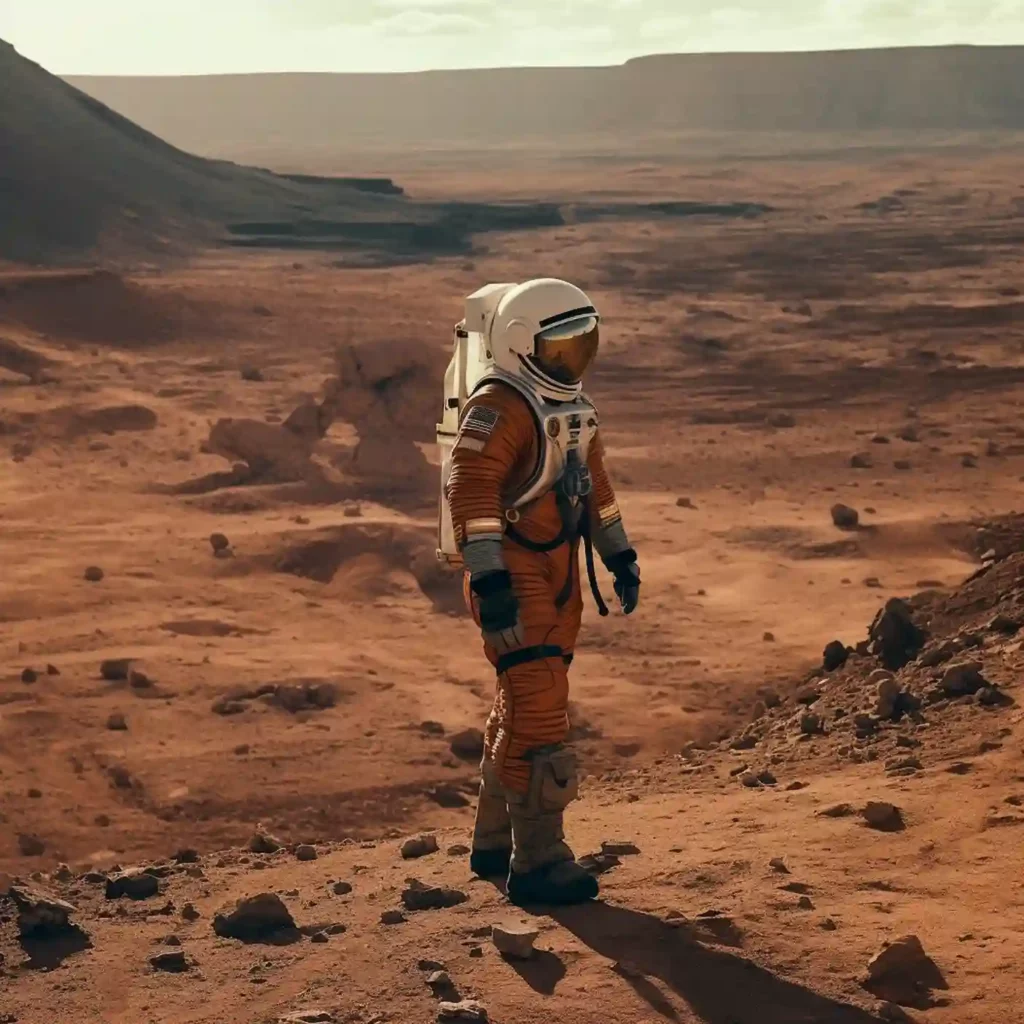
How helmets and spacesuits protect astronauts
We’ve discussed what happens if an astronaut removes their helmet in space, but how does the helmet work?
Helmet Features
Very simply, the helmet protects the head and face from space and contains 4 main parts:
- Protective shell: made of lightweight polycarbonate plastic, it protects the head from micrometeoroids and debris and provides support for the other parts
- Neck ring: made of aluminium, it keeps the helmet in place on the astronaut’s head and connected to the rest of the suit
- Vent Pad: located on the back of the neck ring to help regulate airflow
- Feed Port: located on the front of the neck ring to connect to the oxygen supply
In addition to protecting the head and face, the helmet provides air and communications and a variety of smaller features including:
- A clear plastic visor to protect the astronaut’s eyes from the bright sunlight and potential debris
- An outer shell made of reinforced fiberglass or kevlar to help protect against impact damage
- A liner of soft fabric to absorb sweat and make the helmet more comfortable
- Filters to remove bacteria and contaminants in the air supply that must be changed regularly
- A microphone and earphones to facilitate communications with mission control and other astronauts
Helmet concerns
Helmets are obviously a good idea because they help keep us alive, but there are some concerns with helmets that astronauts must train for and consider when using the spacesuit.
- The space helmet traps body heat and doesn’t let it escape meaning that it can get hot inside a space suit. Astronauts need to drink plenty of water to stay hydrated and avoid overheating.
- There are barriers to vision and hearing, which can cause safety concerns including:
- The visor can fog up
- While the round helmet gives a 210-degree field of view, this is not perfect
- Since sound waves can’t travel through a vacuum, they can’t actually hear what is happening around them; communications systems in the helmet let them hear mission control and other astronauts, but they can’t hear their environment
- It can be very tiring since it’s hard to move your head around in the helmet and the weight of it can make your neck and shoulders sore
But a helmet just protects the head and neck, what about the rest of the body? How are spacesuits designed to protect us?
Spacesuit Design
While there are two main spacesuit designs, the Extravehicular Activities (EVA) spacesuit designed to be used in space as opposed to on a spacecraft consists of four major components:
- The Hard Upper Torso (HUT): includes the helmet, spacesuit shirt, and gloves as well as provides air, cooling, and power
- Lower torso: spacesuit pants and boots; the pants feature a full-torso connection to help support the suit’s weight on the body and the boots are made of a flexible material to provide comfort and traction in zero gravity
- A life support system: provides gasses to breathe and air pressure
- Communications Systems: located in the helmet to communicate with mission control
To achieve these major components, scientists designed a multi-layer system featuring:
- 1st layer: pressure garment to keep the body from expanding too much in the vacuum of space
- 2nd layer: thermal protection to help regulate body temperature including both warming and cooling garments to help keep the body comfortable (the cooling garment circulates water through tubes in the fabric which absorbs body heat and then evaporates, providing cooling)
- 3rd layer: life support providing the gases we breathe
New spacesuit designs
The above details are based on the current standard spacesuit for astronauts on the ISS. In March 2023, NASA revealed the new Artemis III Moon surface mission spacesuit called the Axiom Extravehicular Mobility Unit (AxEMU) developed by Axiom Space in a commercial services partnership.
The spacesuits built upon NASA’s spacesuit designs (both from the Apollo missions and the more recent designs) and incorporated the latest cutting-edge technology to provide enhanced mobility and added protection from the hazards of space and the Moon.
Axiom Space engineer Jim Stein modeled the suit and performed physical demonstrations of the maneuverability while Russell Ralston, deputy program manager of extravehicular activity at Axiom Space, explained various features such as headlights on the helmet, the backpack portable life support system, and how astronauts would enter the suit through the hinged hatch on the back.
While the suits featured dark grey with orange, light blue, and navy blue accents, this is a cover layer used during training and ground testing to protect the suit’s inner layers and protect their innovations from competitors. On the moon, the suits will be white to reflect the Sun’s heat and keep them cool. These suits, designed to fit 90% of men and women in America, will allow humans to walk on the moon again as early as 2025, for the first time since the end of the Apollo missions in the 70s, and will include the first woman and person of color.
In addition, Collins Aerospace won the contract to create new spacesuits for spacewalks outside the ISS, meaning all NASA astronauts will have updated spacesuits for their upcoming missions, utilizing both learned knowledge from previous designs and the latest technology to provide the most maneuverability and protection.
The last update was about 40 years ago for the Space Shuttle and ISS despite an attempt to update suits in 2019 which were ultimately scrapped as their production time wouldn’t have been completed until April 2025. This prompted the call for commercial services partnerships.
We will have to wait to see the ultimate designs and impacts, but it is exciting to see how new technology is being integrated to better protect our astronauts and help them perform their jobs easier.
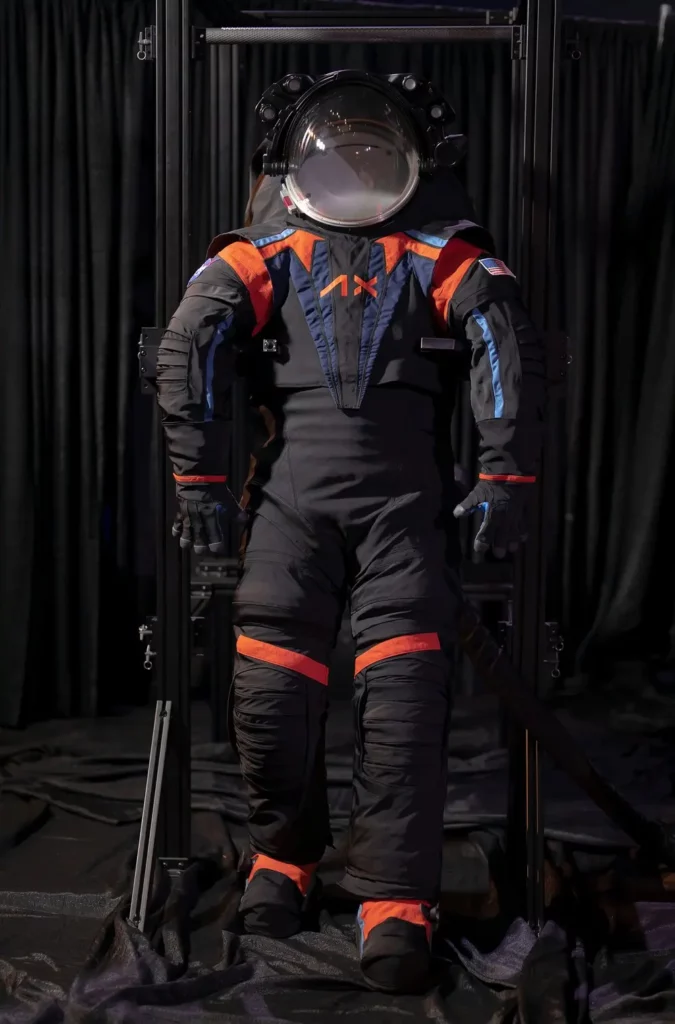
Conclusion
While beautiful as seen from here on Earth, space is a remarkably dangerous place for us as our bodies were designed to live here on Earth. The vacuum of space provides no air molecules to breathe, no pressure to support our lungs, and no heat (unless you are near a hot body or in the direct radiation of the Sun), all of which means death for us.
While taking off a helmet in space would not cause the cinematic moment featured in so many sci-fi movies, it would force all the air out of your lungs, causing you to fall unconscious in about 15 seconds as your brain and other organs go into hibernation from lack of oxygen, and then eventually die from suffocation and organ failure in about 2-3 minutes while your body freezes solid over the next day or so.
Our helmets and spacesuits protect us from the inhospitable environment of space and are currently being updated, both for the future Artemis moon missions and for spacewalks outside of the ISS. We are excited to see where our innovations will take us in our future explorations thanks to these suits.

Sarah Hoffschwelle is a freelance writer who covers a combination of topics including astronomy, general science and STEM, self-development, art, and societal commentary. In the past, Sarah worked in educational nonprofits providing free-choice learning experiences for audiences ages 2-99. As a lifelong space nerd, she loves sharing the universe with others through her words. She currently writes on Medium at https://medium.com/@sarah-marie and authors self-help and children’s books.
Wow! There's more to read 🚀
This page is part of our collection of articles about astronauts. If you enjoyed the read, then you’ll love the following articles.

There are three main reasons why astronauts may have difficulty walking on land after spending so much time in a microgravity environment.

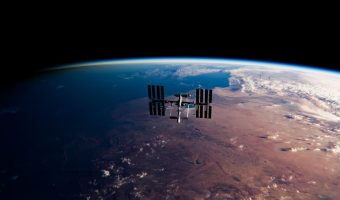

The requirements to become an astronaut are extremely rigorous. Does their salary match the difficulty of their profession?
